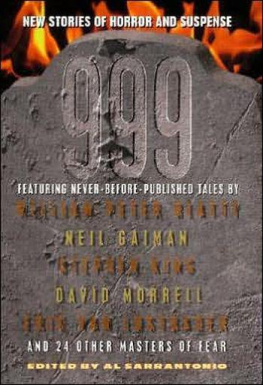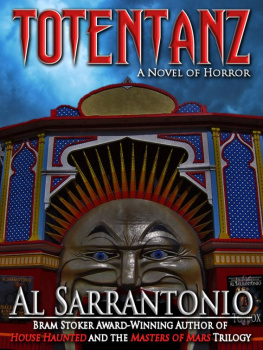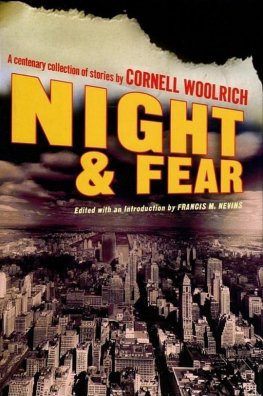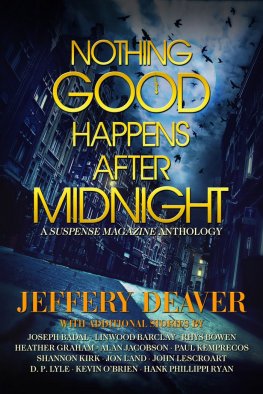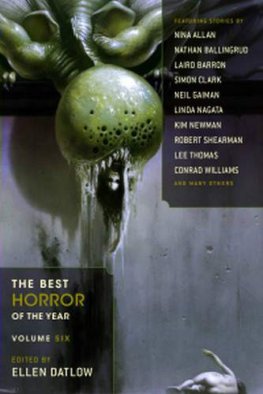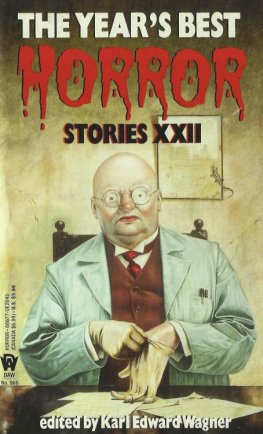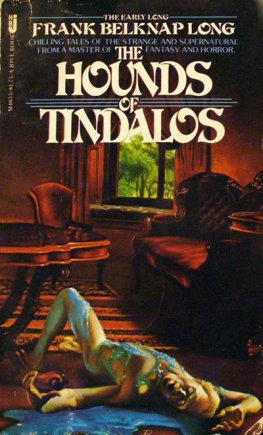Twenty-nine Original Tales of
Horror and Suspense
edited by
A L S A R R A N T O N I O

For
The Editors:
Harlan Ellison,
Kirby McCauley:
Lewis and Clark of no less daunting territories.
Contents
W hat you now hold in your lap (yes, I know its heavy) is a feast.
Quite simply, its the biggest, the most lavishly appointed, and (we think, hope, and pray) the finest collection of brand-new horror and suspense stories ever published.
Part One: Reasons
In 1996 I set myself the goal to put together, by the end of the millennium, a huge original horror and suspense anthology. My initial inspiration was Kirby McCauleys groundbreaking 1980 book Dark Forces , which for many became, and remains, the best collection of new stories in the genre. In turn, McCauleys inspiration was Harlan Ellisons Dangerous Visions , which had, almost single-handedly, changed the way readers thought about science fiction. Since Ellison had been at least partially successful in redefining sf as a literary rather than a ghetto genre, McCauley decided, at the end of the 1970s, that it was time to do the same thing for the horror field, which was just gaining, due to the trickle-down effect of the best-selling efforts of Ira Levin, William Peter Blatty, and a Young Turk named Stephen King, ghetto status of its own. The time was ripe, McCauley reasoned, to elevate the burgeoning horror genre to literary status.
There were successors to McCauley, notably Douglas E. Winter, whose Prime Evil gave a booster shot to the idea of horrors literary viability in 1989. But I came to believe that the horror field, here at the end of the millennium, was still to a great extent stigmatized with the ghetto label and that there was more work to do in gaining for it the literary respect it deserves.
So, twenty years after McCauleys effort, I concluded that it was time to prove, once and for all, that the horror and suspense genre is a serious literary one.
I had other reasons for tackling the project. One was my abhorrence of the fact that there are, as I write this, literally no professional markets for good horror fiction. While on the face of it this might prove that the genre has indeed gained literary acceptancemoved
out of its ghetto, so to speakthe truth is exactly the opposite: it has been squeezed even tighter into its niche and nearly smothered there. While an occasional story by Stephen King or Joyce Carol Oates might appear in one of the slick literary magazines like The New Yorker , these are aberrations, more a consequence of their authors prominence and individual talent than a widening of the genres influence. Despite the continuing success of a few semiprofessional magazines, the most prominent of which remains Richard Chizmars Cemetery Dance , there is, today, almost no place where well-written horror stories are allowed to appear with regularity. When I was making my bones in the business in the late 1970s and early 1980s, there were dozens of outlets for fiction, many of them professionalif Shadows didnt want a particular piece, then The Twilight Zone or Night Cry or Whispers might surely accept it. Today, a young writer with talent trying to break in has nowhere above the semipro level to go. This is both heartbreaking and infuriating.
Such a book as the one I envisioned would at least give some of these new Young Turks a shot at a market paying more than three cents a word.
Another reason, as one of my recurring pipe dreams went: if such a book were successful, it might even start in the genre a third Golden Age (the first having occurred in the 1930s, covering the heyday of Weird Tales under the editorship of Farnsworth Wright; the second covering the fifteen years from 1975 to 1990); then, perhaps, some of those lucrative professional short story markets of the 1980s would return, assuring the continued literary health of the genre.
A final reason was just to do itto see if a massive original anthology, without a theme and displaying great work, was still possible in the field at the end of the millennium.
Part Two: Definitions
What you will find in this book are stories of both supernatural horror and nonsupernatural suspense. For the purposes of this project, and in order to present the genre at its widest and most representative, my definition of the terms horror and suspense is the broadest possible one: if it scares you, thats it. There may or may not be a bogeyman. The bogeyman might be nothing more than the human mind (to me, the scariest place of all). The important thing is the scare itself.
(For better, more descriptive, deeper, and more entertaining discussions
of what horror, terror, suspense, fear, and all that is, I direct you with enthusiasm to three sources: H. P. Lovecrafts seminal essay Supernatural Horror in Literature; the introduction to the best single collection of classic, reprint horror stories ever assembled, Phyllis Cerf Wagners and Herbert Wises Modern Library volume Great Tales of Terror and the Supernatural; and Stephen Kings various writings on the subjectespecially Danse Macabre.)
Part Three: Reality
Ive given my reasons for persuing this project in 1996how did things turn out?
That I was able to do the book is idiotically self-evident: the damned thing is weighing down your lap at this moment. At more than a quarter of a million new words, and containing one novel, three novellas, eight novellettes, and a whole bunch of short stories, it is the fattest volume of its kind ever assembled; and we were able to pay the authors a very healthy rateas far as I know, the highest that has ever been paid for an original horror anthology. (They all got the same rate, by the way.)
And, twenty years after Dark Forces , I had no trouble collecting quality work with high literary standards. Even if the field at this point is horribly contracted (it is) and the markets stink (they do), there is still a hell of a lot of good, well-written stuff out there, much more than I could use. I raised the bar, and the writers, bless em all, never brushed it as they vaulted over. Even with all the room I had in this book, I had to turn away top-notch stories.
And Ive been able to publish some newer writers whove never been exposed to this kind of venue.
That covers three of my reasons for doing this book.
But what about my fourth reason: to inspire a third Golden Age in the field?
Well that remains to be seen.
It might prove instructive to examine the past before predicting the future.
Part Four: You Guessed It, the Past
By the early 1980s, the horror field seemed to be driving a steamroller over every other form of imaginative fiction. The number of science fiction, fantasy, and mystery writers who climbed up into the steamrollers cabnot to mention the occasional mainstream or romance writer such as Anne Rivers Siddons, author of the brilliant (if clunkily written) novel of haunting The House Next Door only proved the fields sudden viability (not only was it exciting, there was money to be made). The newly ghettoed genre became a repository for stories that couldnt be published anywhere else (a very good thing, and Im not the first one to notice this). It coalesced out of nearly nothing into something vibrant, exciting, and controversialremember the heated arguments over quiet horror and splatterpunk"?and then ultimately, by the end of the decade, began to deflate and nearly disappear.
Why?
Its tempting to blame the mindless, self-destructive, and bone-headed policies of a publishing industry that never understood the field to begin with, didnt know poop from popcorn as far as what belonged therein, never gave a thought to anything beyond the bottom line, and then crap-published the genre nearly out of existence.

